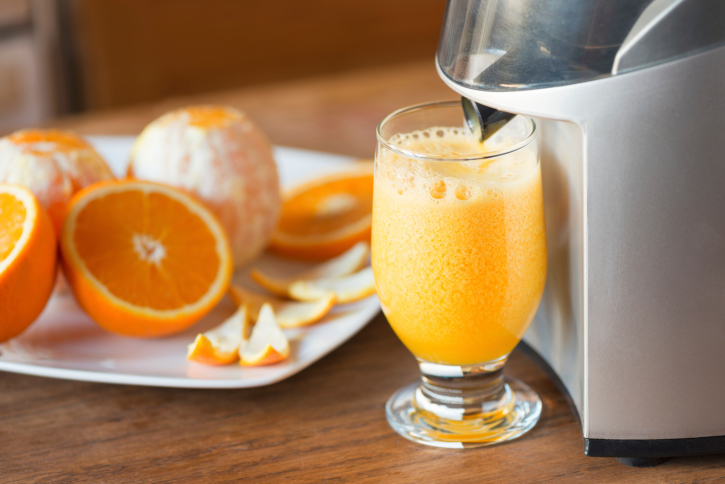The juicer: a runner’s go-to kitchen gadget


Getting all your servings of fruits and vegetables can sometimes be a drag, but a great way to make things easier is a small investment in a juicer.
The machine is just what it sounds like. It squeezes fruit and vegetables into juice, and they can be bought for a fairly reasonable price if you keep watch for sales. If you’re patient, you can probably find a half-decent juicer for $100, but make sure you get a study one with a good motor. The last thing you’ll want is to just get the hang of juicing up a post-run snack and having the machine break down on you.
A juicer is one of the few appliances in your kitchen that will actually improve your health. Most of the appliances you use each day are for convenience purposes or frying stuff into submission, but a juicer will make keeping up with fruit and vegetable intake easy. You can knock off half of your recommended servings before heading to work. A full glass of fresh orange juice in the morning will take about five oranges, but of course you can put whatever you want in it. For a bit more of a sour taste, toss a lemon or a grapefruit in the mix.
A few great alternatives to the usual stuff you would find on the juice shelves at the grocery store are cucumbers or kale for a vitamin E and iron boost. You could go for a more antioxidant-based route and juice up a bunch of berries.
One of the best uses of a juicer is taking advantage of whatever has been left neglected that week. Try spicing some things up and going for a more freestyled approach with whatever is in arms reach. Are there a few bruised apples you’ve been avoiding on the counter? Why not mix them up with the blueberries that have been getting a bit more shriveled than you like? You could also toss that tomato you cut one slice off of last week in. Bam, fresh appleberry tomato cocktail. Or you could look to more obscure fruits and vegetables. Beets and sweet potatoes make surprisingly tasty fresh drinks, and the aerobic advantages of beets are fairly well documented.
After you’ve juiced the goods you’ll be left with a thick pulp-sludge of solids which the machine deemed unsuitable for drink. Your first reaction may be to get rid of this but don’t toss them yet. The pulp has a bunch of uses that go surprisingly well with the juice. A morning juice before work might not leave you enough time to bake a tray of muffins, but on weekends when there’s more time available the pulp makes great baked goods. Some have also used it for cracker dips or thick sauces.
Still, all is not perfect in the land of fresh juicing. It can be messy and, if left unwashed too long, it can become nearly impossible to clean. When you’re done with juicing your drinks, get it in the sink and let it soak until you want to come back and finish washing it. It will save you the time and headache of scraping dried juice off it later.
If you’re interested in wasting less food and fitting more produce in your diet, a juicer might be the way to go. It will save you money on wasted food and will help keep your fruit and vegetable intake up.


